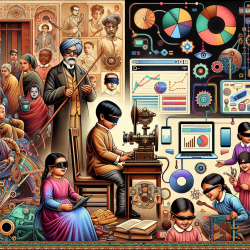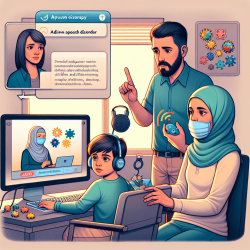Introduction
The historical exploration of blindness in British India from 1850 to 1950, as detailed in Aparna Nair's research paper, provides a comprehensive understanding of the social, medical, and institutional narratives surrounding visual impairment during the colonial period. This blog aims to distill the findings from the paper to help modern practitioners enhance their skills and encourage further research into historical and cultural contexts of disabilities, particularly blindness.
Key Findings and Implications
The research highlights the pervasive nature of blindness in British India, attributing its causes to infectious diseases, environmental factors, and social practices. The colonial census played a crucial role in enumerating blindness, which was perceived as both a medical and social issue.
Practitioners today can draw valuable lessons from these historical insights:
- Understanding Cultural Contexts: The paper underscores the importance of considering cultural and social contexts when addressing disabilities. Practitioners should be aware of the cultural beliefs and practices that may influence the perception and management of disabilities.
- Data-Driven Approaches: The colonial census provided a framework for data collection that can be mirrored in modern practices. Accurate data collection and analysis are essential for understanding the prevalence and causes of disabilities, enabling targeted interventions.
- Holistic Approaches: The historical narratives reveal the need for a holistic approach to disability management, integrating medical, social, and educational interventions. Practitioners should consider the broader social and environmental factors affecting individuals with disabilities.
Encouraging Further Research
While the research provides a detailed historical account, it also highlights gaps in the understanding of blindness and disability in colonial India. Modern practitioners and researchers are encouraged to explore these areas further:
- Comparative Studies: Conducting comparative studies between historical and contemporary practices can provide insights into the evolution of disability management and highlight areas for improvement.
- Cross-Cultural Research: Investigating how different cultures perceive and manage disabilities can inform culturally sensitive practices and policies.
- Impact of Colonial Policies: Understanding the long-term impact of colonial policies on current disability practices can help address systemic issues and improve outcomes for individuals with disabilities.
Conclusion
The historical exploration of blindness in British India offers valuable lessons for modern practitioners. By understanding the cultural, social, and historical contexts of disabilities, practitioners can enhance their skills and contribute to better outcomes for individuals with disabilities. For those interested in delving deeper into this topic, I encourage you to read the original research paper, ‘They Shall See His Face’: Blindness in British India, 1850–1950.










